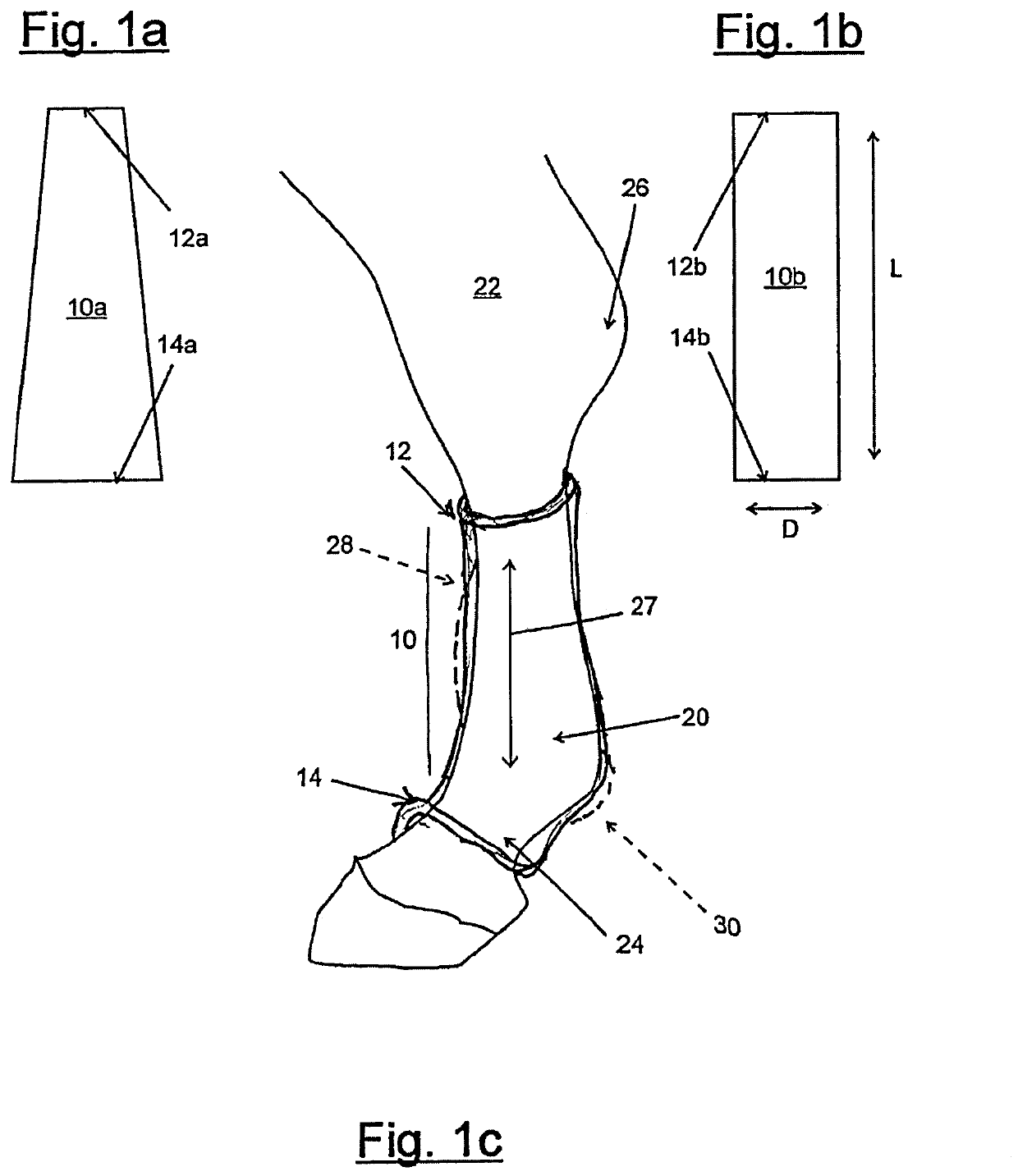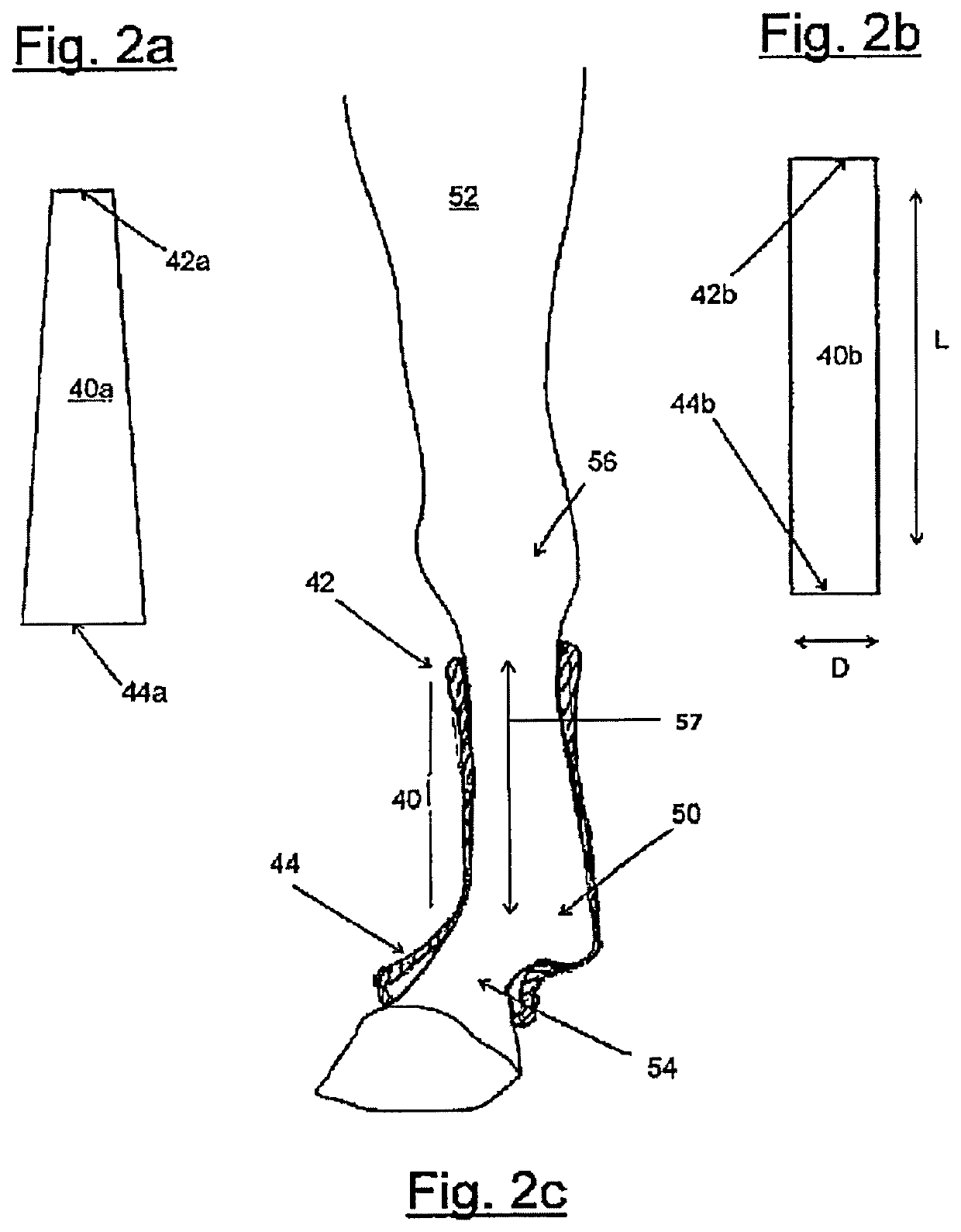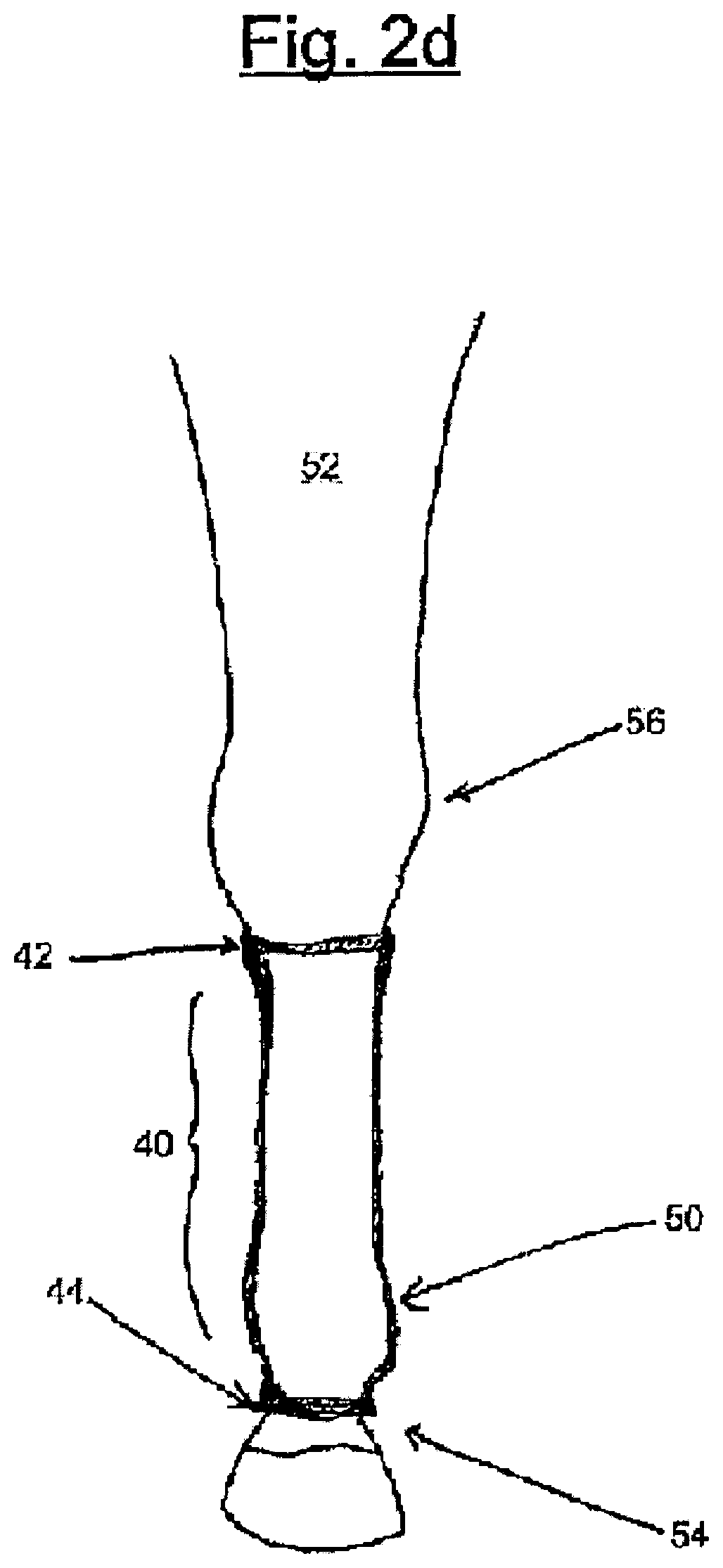Therapeutic joint support for animals
a joint support and therapy technology, applied in the field of therapeutic joint support, can solve the problems of restricting joint motion, affecting the healing process, so as to reduce sweating, speed up healing, and resist slippage and shifting
- Summary
- Abstract
- Description
- Claims
- Application Information
AI Technical Summary
Benefits of technology
Problems solved by technology
Method used
Image
Examples
Embodiment Construction
[0031]A breathable fabric sleeve provides varying elastic support to help heal strains, sprains and bruises to the ligaments and tendons of an animal's fetlock and pastern joints. Preferably the sleeve is made of a seamlessly woven elastic fabric. The sleeve is applied over the fetlock of the leg of a horse or other animal, from the pastern up to below the knee, on the front leg, or to below the hock, on the hind leg. The sleeve has uniform elastic strength around the circumference of the sleeve, but provides variable compression, so that an upper part of the sleeve provides greater circumferential compression and the lower part provides less compression. The variable compression can be produced by using a looser weave in a bottom end of the sleeve, and / or by increasing the diameter of the bottom end, relative to that of the central portion of the sleeve. The length of the sleeve is selected so that, when the top hem is applied to the leg above the fetlock, the bottom hem of the sle...
PUM
 Login to View More
Login to View More Abstract
Description
Claims
Application Information
 Login to View More
Login to View More - R&D
- Intellectual Property
- Life Sciences
- Materials
- Tech Scout
- Unparalleled Data Quality
- Higher Quality Content
- 60% Fewer Hallucinations
Browse by: Latest US Patents, China's latest patents, Technical Efficacy Thesaurus, Application Domain, Technology Topic, Popular Technical Reports.
© 2025 PatSnap. All rights reserved.Legal|Privacy policy|Modern Slavery Act Transparency Statement|Sitemap|About US| Contact US: help@patsnap.com



